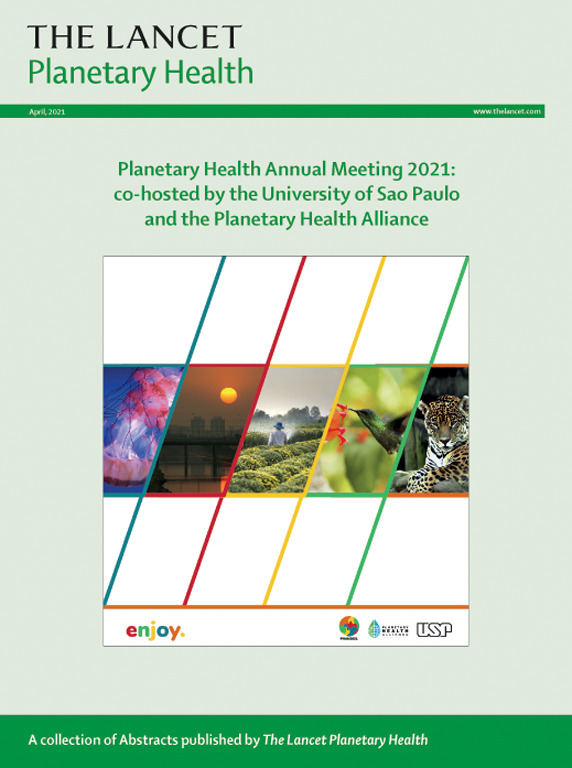Global assessment of population exposure to multiple climate-related hazards from 2003 to 2021: a retrospective analysis
IF 21.6
1区 医学
Q1 ENVIRONMENTAL SCIENCES
引用次数: 0
Abstract
Background
The climate crisis is increasingly recognised as a health crisis, driven in part by the growing frequency and intensity of climate-related hazards, such as heatwaves and wildfires. These hazards can coincide, potentially leading to compound impacts. However, little is known about where and how often such combinations occur globally. This study aims to map historical population exposure to multiple interacting climate-related hazards and identify regions that have been most affected.
Methods
In this retrospective study, we analysed global data from the 2024 Lancet Countdown on health and climate change, International Best Track Archive for Climate Stewardship, The Inter-Sectoral Impact Model Intercomparison Project, and WorldPop from 2003 to 2021 at a 0·25° resolution to examine the population that was exposed to combinations of six climate hazards: heatwaves, droughts, wildfires (PM2·5), extreme precipitation, river floods, and tropical cyclones. We identified administrative level 1 regions based on several hotspot definitions and did detailed case studies in the most exposed regions.
Findings
We detail how frequently people at each grid point have been exposed to various combinations of hazards, revealing both regular patterns and rare, region-specific occurrences. Our analysis indicates an increase in per-person exposure to many hazards during the study period, with a more pronounced rise in multihazard exposure than single-hazards. Between 2003–12 and 2012–21, per-person exposure to three or more hazards increased by 69%. Heatwaves were the most common hazard and also showed the clearest trend, largely driving the observed increases in both single-hazard and multihazard exposure. Multihazard hotspots vary depending on the specific definition used. For instance, exposure to multiple hazards is explained by the seasonality of hazards, which leads them to co-occur in the same months. Additionally, incorporating specific vulnerable age groups into our analysis reveals hotspots that consider the sociodemographic characteristics of the regions.
Interpretation
These findings highlight the importance of incorporating multihazards into climate and health risk assessments. Our study enables an examination of historical events to deepen our understanding of interactions between hazards. Given the rarity of many hazard combinations, traditional epidemiological methods might fall short. Thus, alternative approaches, such as storyline development, are essential to enhance our preparation for future multihazard occurrences. This work finally serves as a crucial baseline future multihazard risk assessment under different climate and socioeconomic scenarios.
Funding
MYRIAD-EU, Netherlands Organisation for Scientific Research, Horizon 2020, and German Academic Scholarship Foundation.
2003 - 2021年全球人口暴露于多种气候相关危害的评估:回顾性分析
气候危机越来越被认为是一场健康危机,部分原因是热浪和野火等与气候有关的灾害日益频繁和严重。这些危害可能同时发生,可能导致复合影响。然而,对于这种组合在全球范围内发生的地点和频率知之甚少。本研究旨在绘制历史人口暴露于多种相互作用的气候相关危害的地图,并确定受影响最大的地区。在这项回顾性研究中,我们以0.25°分辨率分析了来自2024年《柳叶刀》健康与气候变化倒计时、国际气候管理最佳跟踪档案、跨部门影响模型比对项目和世界流行(WorldPop) 2003年至2021年的全球数据,以检查暴露于六种气候灾害组合的人口:热浪、干旱、野火(pmm2·5)、极端降水、河流洪水和热带气旋。我们根据几个热点定义确定了行政一级区域,并在最暴露的区域进行了详细的案例研究。我们详细描述了每个网格点上的人们暴露于各种危险组合的频率,揭示了常规模式和罕见的区域特定事件。我们的分析表明,在研究期间,人均暴露于多种危害的情况有所增加,其中多危害暴露比单一危害暴露的增加更为明显。在2003 - 2012年和2012-21年期间,人均暴露于三种或三种以上的危害增加了69%。热浪是最常见的危害,也显示出最明显的趋势,在很大程度上推动了所观察到的单危害和多危害暴露的增加。多危害热点根据所使用的具体定义而有所不同。例如,暴露于多种危害可以用危害的季节性来解释,这导致它们在同一个月内同时发生。此外,将特定的弱势年龄组纳入我们的分析,揭示了考虑该地区社会人口特征的热点。这些发现强调了将多重危害纳入气候和健康风险评估的重要性。我们的研究使我们能够对历史事件进行考察,从而加深我们对灾害之间相互作用的理解。鉴于许多危险组合的罕见性,传统的流行病学方法可能不够。因此,制定故事情节等替代方法对于加强我们对未来多重灾害事件的准备至关重要。这项工作最终可作为未来不同气候和社会经济情景下多灾害风险评估的关键基线。资助项目:myriad - eu、荷兰科学研究组织、地平线2020、德国学术奖学金基金会。
本文章由计算机程序翻译,如有差异,请以英文原文为准。
求助全文
约1分钟内获得全文
求助全文
来源期刊

Lancet Planetary Health
Multiple-
CiteScore
28.40
自引率
2.30%
发文量
272
审稿时长
8 weeks
期刊介绍:
The Lancet Planetary Health is a gold Open Access journal dedicated to investigating and addressing the multifaceted determinants of healthy human civilizations and their impact on natural systems. Positioned as a key player in sustainable development, the journal covers a broad, interdisciplinary scope, encompassing areas such as poverty, nutrition, gender equity, water and sanitation, energy, economic growth, industrialization, inequality, urbanization, human consumption and production, climate change, ocean health, land use, peace, and justice.
With a commitment to publishing high-quality research, comment, and correspondence, it aims to be the leading journal for sustainable development in the face of unprecedented dangers and threats.
 求助内容:
求助内容: 应助结果提醒方式:
应助结果提醒方式:


